Blueberry plants can bear fruit for decades. Blueberry bushes certainly reward us with their fruits, but they can also be grown as a shrub or screen. You can plant Blueberry bushes in containers and use them as food ornaments to decorate a patio. “Blueberry farming in the USA” is a profitable business that can grow across the continent.
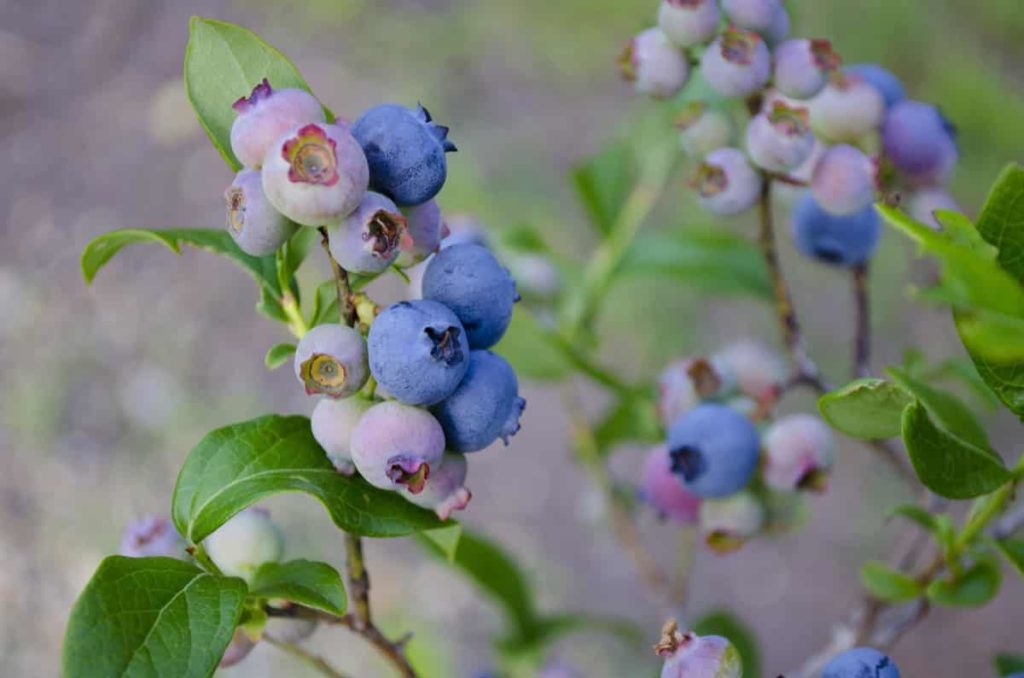
Reasons for cultivating Blueberries in the USA
- Improve the landscape: Blueberries can be an attractive pattern in your landscape. They can provide red autumn plants and bell-shaped, creamy white spring flowers that will enhance the look of your backyard or garden.
- Nutritional value: Blueberries are one of nature’s superfoods. Blueberries have a high nutritional value, essential minerals, nutrients, and health-promoting polyphenols. You will enjoy them too because they are delicious.
- Easy to Grow: Growing Blueberries is not a complicated process. They can grow in all parts of the Americas and require basic care to thrive.
Soil management for Blueberry farming in USA
Moist, acidic, organic, well-drained soil. Blueberries require a soil pH level of 4.0-5.2. If you do not have acidic soil, it can be easily replaced by working with a local garden supply store to help lower your soil pH. The soil pH level can also be reduced by adding elemental sulfur or elemental sulfur in the form of fine powder in the form of pellets. Aluminum and iron sulfate are no longer recommended, as they poison plants with specific soil types.
3-20% organic matter range is best. To enhance the soil’s organic matter, modify it with organic mulch, wet moss, fine-aged sawdust, straw, or leaf litter. The spacing for Blueberries depends on the desired use in the landscape. Bushes can be planted individually or in hedgerows. The rows are 10-12 feet apart if the hedgerow is placed 5-6 feet apart. If planting bushes individually, keep plants more than 10 feet apart for cross-pollination. Remove all flowers in the first year to encourage more growth.
Blueberry varieties in the USA
Five major varieties of Blueberries are grown in the United States: Low Bush, Northern High Bush, Southern High Bush, Rabbiteye, and Half High. The northern high bush Blueberry varieties are the most common Blueberry cultivars.
In case you missed it: Top 15 Steps to Boost Blueberry Yield: How to Increase Production, Size, and Quality
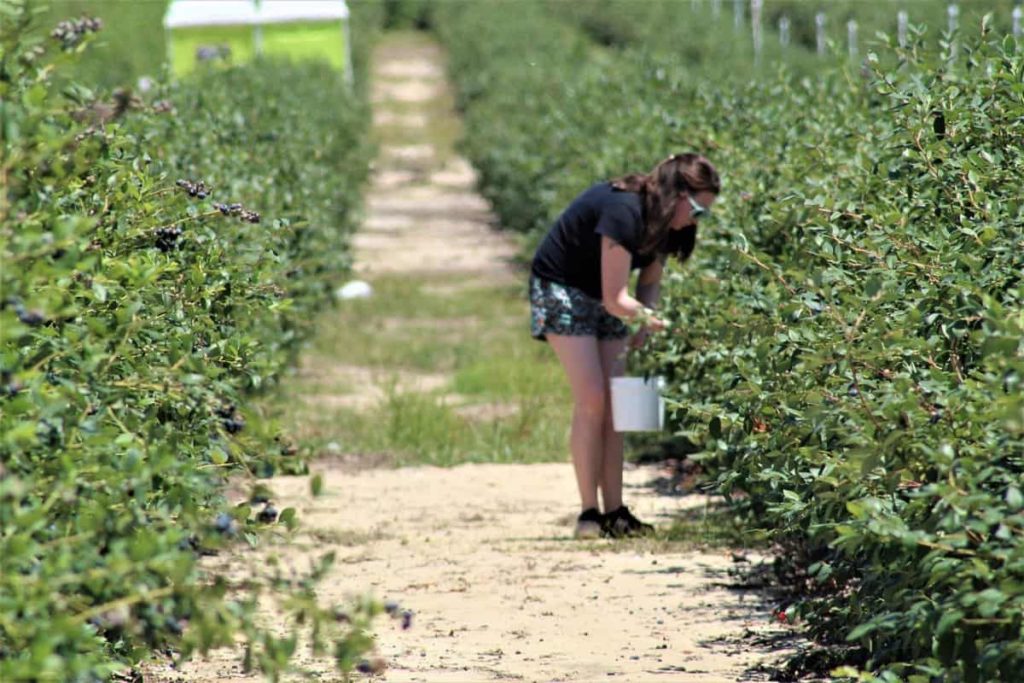
The cultivation of highbush cultivars is self-fertile. However, cross-pollination through another cultivar ensures large berries. Choose another Blueberry of the same type to ensure maximum yield and size. Rabbiteye and Lowbush are not self-fertile. Rabbiteye Blueberries require a different rabbiteye crop to be pollinated, and lowbush varieties can be pollinated with either another lowbush or highbush cultivar.
Highbush Blueberries – The scientific name for this Blueberry variety is Vaccinium corymbosum, 5-9 feet long and wide. It is native to the northeastern and eastern United States. Popular cultivars include the mid-season “Bluecrop,” “Blueray,” and “Berkeley,” the early blooming “Collins” and “EarliBlue,” and the late opening “Patriot” and “Jersey.”
Low-bush Blueberry varieties, as their name suggests, are smaller, true bushes than their high-bush counterparts, which usually grow below 1 ½ feet (0.5 m). To get the full yield, plant more than one crop. This type of Blueberry bush requires a little pruning, although it is recommended that the plants be cut to the ground every 2-3 years. The dwarf is a low shrub used for ornamental landscaping and container gardening. Ruby carpet is another low shrub that grows in USDA zones 3-7.
Northern highbush varieties are native to the eastern and northeastern United States. They require continuous pruning of Blueberry varieties. Some important highbush cultivars are Bluecrop, Bluegold, Blueray, Duke, Elliot, HardyBlue, Jersey, Legacy, Patriot, and Rubel. All range in USDA hardiness zones.
Varieties of southern high bush Blueberry bushes are hybrids of V. corymbosum and Floridian native V. darrowii, which can grow between 6-8 feet (2 to 2.5 m) in height. This type of Blueberry was developed to allow berry production in mild winter areas, as they require less cooling time to break buds and flowers. Bushes bloom in late winter so that the frost will damage yields. Therefore, southern highland shrubs are best suited for areas where the winter season is mild. Some of the highbush cultivars in the Southern are Golf Coast, Misty, Oneal, OzarkBlue, SharpBlue, and Sunshine Blue.
Rabbiteye blueberry varieties are native to the southeastern USA. They were made to thrive in long, hot summers. Therefore, they are more susceptible to winter damage than northern highbush Blueberries. Many of these older varieties have thicker skins and stone cells. Suggested varieties include Bright Well, Climax, PowderBlue, Premier, and TufBlue.
Half-high Blueberries cross between Northern Highbush and Lowbush Berries and will tolerate temperatures of 1 to 7°C. A medium-sized Blueberry, the plants are 3-4 feet tall. They grow well in containers. They require less pruning than highbush varieties. In the half-high, you will find Bluegold, Friendship, Northcountry, Northland, Northsky, Patriot, and Polaris.
How and when to fertilize Blueberries in the USA
Blueberries do not fertilize the first year. Over the next few years, fertilize in the spring with ammonium sulfate or a complete 10-10-10 fertilizer (for acid-loving plants). Split the dose, one after the buds open and the other one month later. Increase the amount as the plants mature. Only nitrogen is required continuously. Never apply nitrate-containing fertilizers such as ammonium or calcium nitrate as they can be toxic to plants.
In case you missed it: Blueberry Farming Information Guide
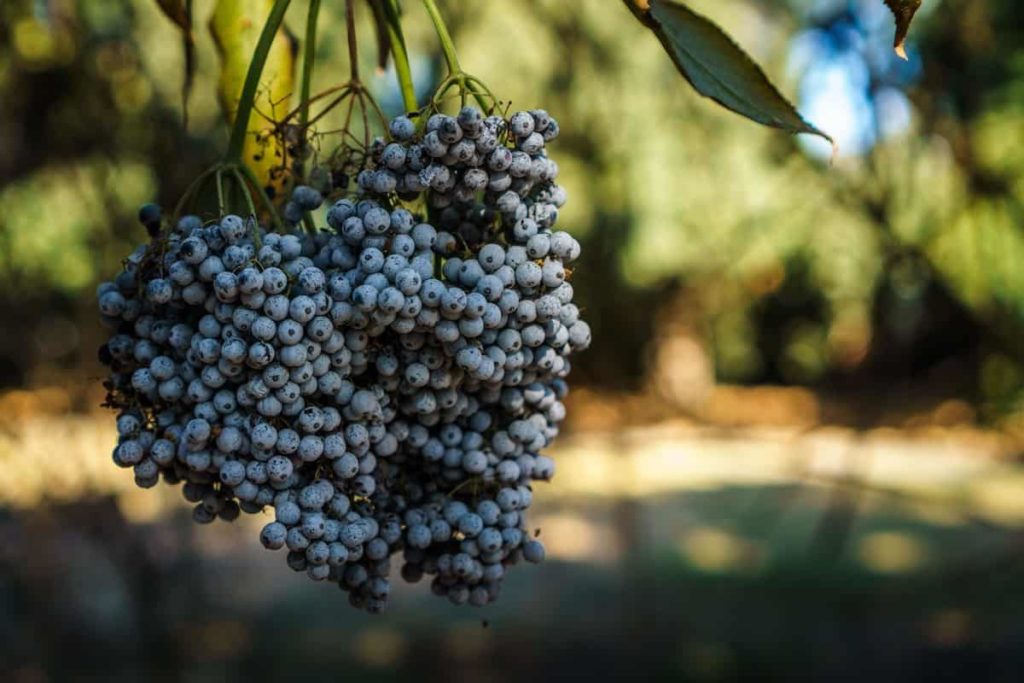
Spring is the best time to fertilize Blueberries. Use fertilizer sparingly. Avoid high-nitrogen fertilizers. Although you can get a lot of plant growth, fruit production will not be so good. To naturally add nitrogen to the soil and prevent weeds, you can plant clover-like crops under Blueberries. Check soil pH level every year. Modify the soil around existing plants as needed. Amendments such as compost and fertilizer approved for use on acid-loving plants such as camellias and azaleas are also good for use on Blueberry plants.
When to fertilize Blueberries
- USDA Zones 8-9: Fertilize three times a year – in late February, late May, and late July / early August.
- USDA Zones 6-7: Fertilize further north, in March or once a year after bud break. It is likely to cause early fruit drop, but growth at this stage is more important for their development.
- All USDA Zones: Never apply fertilizer after August as it will start new growth much later in the year and cause frost damage.
Be careful not to spread the fertilizer evenly over the Blueberry root zone and water it well. Blueberries become suckers, and the plant spreads each year, increasing the amount of fertilizer applied each year until the sixth year after planting. If your young Blueberries are not growing, they may stop. If so, try replenishing your fertilizer with liquid fertilizer. Spray them for a month a week; if they still haven’t grown 6 inches, then continue treatment. Blueberry will be stunned if it does not doubt its size in its first year.
Top states in the US to grow Blueberries
California, Texas, New York, Florida, and Illinois are the major states that are the largest consumers of Blueberries in the United States. In addition, the top states in the US to grow Blueberries cover a wide range of climates and geographies. In all of this, the healthfulness attributed to the fruit makes its growth an increasingly lucrative prospect for farmers.
Blueberry production and processing have grown globally over the last ten years, almost doubling in the United States alone. The main impetus for the fruit crop’s popularity is the growing public awareness and interest in berries’ many health benefits. Based on USDA research, Blueberries are rich in antioxidant phytonutrients that help extinguish the activity of free radicals in body cells.
Free radicals are suspected of playing a role in the development of heart problems as well as cancer. Washington is the US capital of Blueberry, with a production of over 96.1 million pounds, while New York is in the top ten with 1.6 million pounds.
New York – On nearly 700 acres of Blueberry growing, New York harvested 1.6 million pounds last year and is currently ranked as the country’s 10th most successful Blueberry-producing state.
In case you missed it: Organic Vegetable Farming in USA: How to Start, and Top Production States
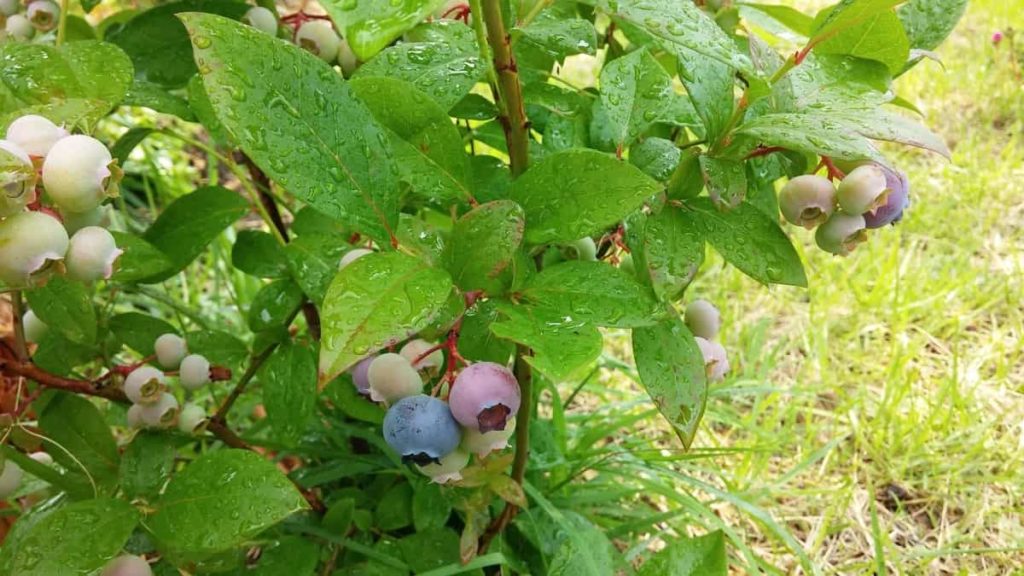
Mississippi – Most of Mississippi’s Blueberries are in the southeastern part of the state. The reason for this concentration is that the Blueberries belong to areas similar to the southeast of Mississippi, such as the pine forests. Rabbit-Eye is one of the most important indigenous breeds commercially grown in the state.
Florida – Florida’s Blueberry farming was 16 million last year, making it one of the leading Blueberry-producing states in the world.
North Carolina – North Carolina continues to be among the top 10 states in the country for producing Blueberries.
California – Until recently, it wasn’t easy to find commercial Blueberry farms in California. Blueberries have traditionally been adapted to the northern forests, leading to technological advances, and courageous growers have promoted the extraordinary growth of California Blueberries over the past decade.
New Jersey – New Jersey is currently the fifth-largest Blueberry-producing state in the United States. Despite the state’s smaller size than other leaders, New Jersey farmers have recorded 56.7 million pounds of Blueberries this year alone.
Oregon – Three Blueberry varieties are best suited for the Oregon climates – the northern highbush varieties, rabbiteye varieties, and the half-high varieties. The Blueberry fruiting season is long in Oregon, extending from late June through early October, depending on the type of crop grown and the crop.
Michigan – Most of Michigan’s Blueberries are grown in southwestern Michigan, where high water tables and sandy soil provide the best conditions for Blueberry growth.
Georgia – Many Georgia farmers have worked tirelessly over the past three decades to increase their state’s Blueberry production and meet consumer demand.
Washington – The first Blueberry tree planting in Washington began 50 years ago. In the past, when Blueberries were still being planted in the state, only a handful of farmers and a handful of processors bought their fruits.
Pruning Blueberry plants
If they are growing in the type of environment they love – not too much competition with acidic soil, weeds, and full sun – Blueberry bushes are the biggest producers of berries. It is their high productivity that drives them out. Canes older than seven years become less productive. To maintain a good yield, Blueberry bushes must be pruned every year.
If your bushes have never been pruned, be careful not to go too far in the first year: do not remove more than two or three of the oldest canes (older than seven years). Remove crossing branches except for any diseased or broken wood. You want the bush’s base to be narrow and wide open to allow sunlight and air to enter.
In case you missed it: Hydroponic Farming in USA: How to Start, a Guide for Beginners
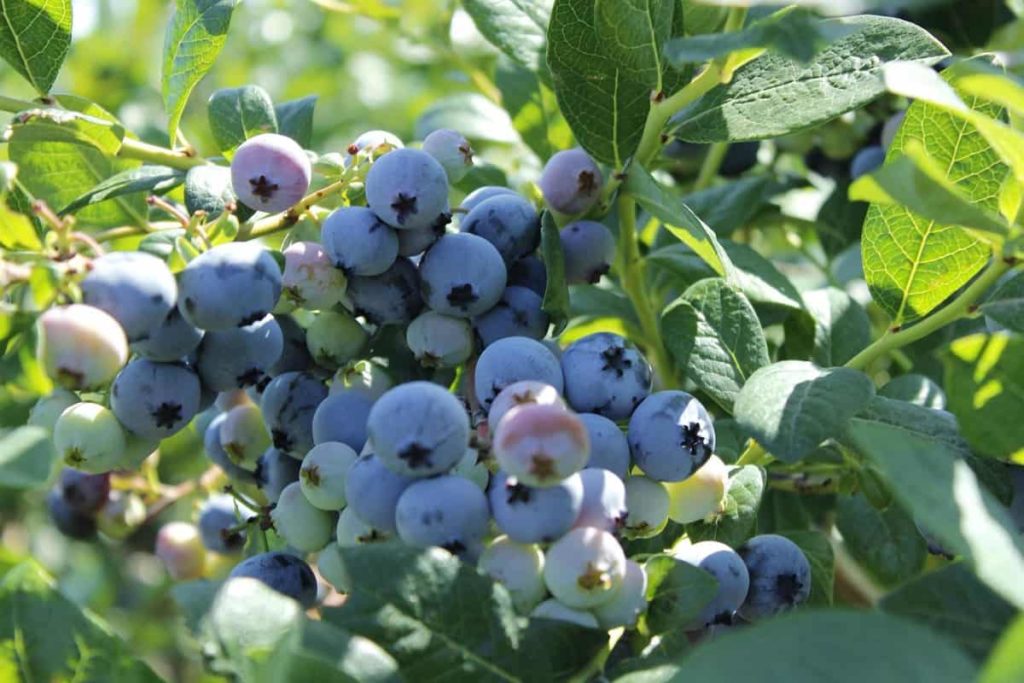
The best time to prune Blueberry bushes is at the end of winter when they are still dormant. It will take about two years for the young branches to bear fruit, so be patient. Remove leaf litter and other debris from plant roots. Instead of pruning, all the berries on the ground are cut.
Do not prune for the first 2 to 3 years except when removing damaged or abrasive canes. When the bushes have matured after many years, remove the old central canes and cut the background, pointing inwards towards the main cane. Harvest in late winter or early spring when inactive. Autumn pruning in Blueberry is not recommended, as new shoots may die in the winter. If necessary, thin out the dormant fruit buds to obtain smaller but larger berry varieties.
How to protect Blueberries from birds
Birds like the taste of Blueberries as much as humans. If you do not want to share your crop, you may need to cover the Blueberry plants with bird nets. Many gardeners create a netting framework that fits neatly into Blueberry bushes and gives them easy access to pick.
How to harvest Blueberries
Choose Blueberries in the morning, when the fruit is cool. Harvest the fruit, which is completely covered with gray dust. Refrigerate unrinsed berries immediately after picking. Blueberry plants tend to produce a great number of fruits as plants age.
Blueberry Market in the United States
The major factors driving the Blueberry market in the United States include the growing preference for foods rich in superfruits and antioxidants, the growing market for fresh berries, the growing use of Blueberries in the beverage and confectionery sectors, and the enhancement and adoption of beauty. However, the major factors holding back the market are labor shortages, especially harvest workers, and marketing barriers that affect revenue.
In case you missed it: Soybean Farming in USA: How to Start, Production by State, Cultivation for Beginners
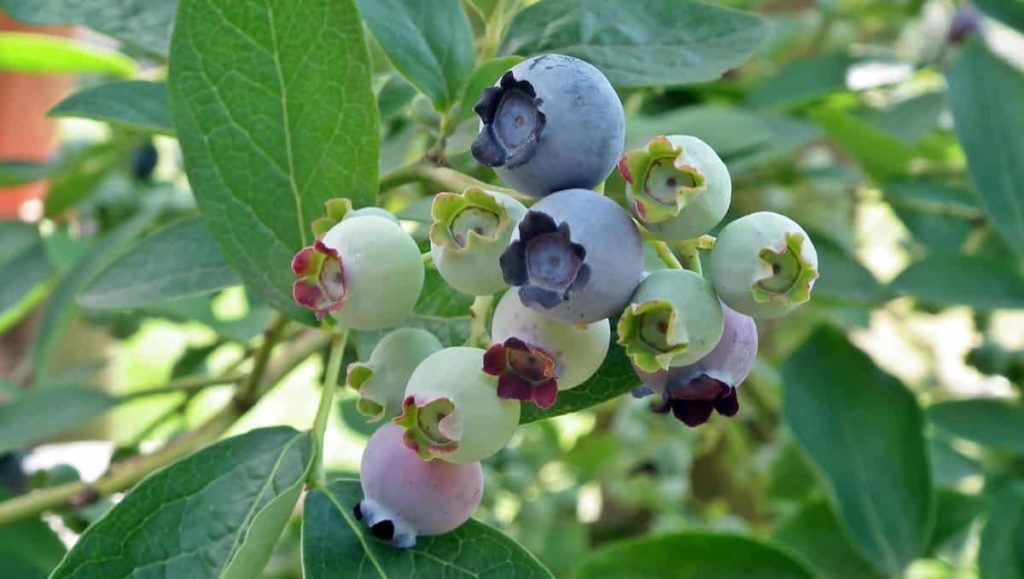
Blueberries are grown mostly in temperate regions in more than 38 states of the United States. Blueberries are traded in wild and cultivated forms. In terms of wild Blueberries, the major importers of Blueberries from the United States include Canada, the Netherlands, the United Kingdom, China, and Japan. However, the major exporters of Blueberries to the United States are Canada, Peru, and France.
Key market trends
- Favorable weather conditions and increased interest in farming – the United States is the largest producer of Blueberries, accounting for half of the global Blueberry production. With favorable weather conditions and growing interest in crops within the country, production is increasing further.
- Major states increasing production include Michigan, Maine, Oregon, New Jersey, and Georgia. Favorable weather in North America occurs between April and October. Climate conditions in the United States favor the production of the northern high bush, southern high bush, rabbiteye, low bush, and half-high varieties.
- Rising Consumption of Blueberries in the Country – California, Texas, New York, Florida, and Illinois are the major states that are the largest consumers of Blueberries in the United States. These states account for 36.9% of the total Blueberry consumption in the country. They are also a great source of fiber, an important nutrient for a healthy digestive system. In search of super fruits, more and more consumers are moving to the soft fruit shelves.
Conclusion
Blueberries are delicious, nutritious, and require little effort to grow. Blueberry production is increasing, as reflected by the escalating demand for planting material and the high output of fresh and processed fruit products.
- Economical Aquaculture: A Guide to Low-Budget Fish Farming
- 15 Common Planting Errors That Can Doom Your Fruit Trees
- How to Make Houseplants Bushy: Effective Tips and Ideas
- Innovative Strategies for Boosting Coconut Pollination and Yield
- Pollination Strategies for Maximum Pumpkin Yield
- The Complete Guide to Chicken Fattening: Strategies for Maximum Growth
- Natural Solutions for Tulip Problems: 100% Effective Remedies for Leaf and Bulb-Related Issues
- Revolutionizing Citrus Preservation: Towards a Healthier, Greener Future
- Natural Solutions for Peony Leaf and Flower Problems: 100% Effective Remedies
- Maximizing Profits with Avocado Contract Farming in India: A Comprehensive Guide
- Natural Solutions for Hydrangea Problems: 100% Effective Remedies for Leaf and Flowers
- The Ultimate Guide to Choosing the Perfect Foliage Friend: Bringing Life Indoors
- From Sunlight to Sustainability: 15 Ways to Use Solar Technology in Agriculture
- The Ultimate Guide to Dong Tao Chicken: Exploring from History to Raising
- The Eco-Friendly Makeover: How to Convert Your Unused Swimming Pool into a Fish Pond
- Mastering the Art of Delaware Chicken Farming: Essentials for Healthy Backyard Flocks
- 20 Best Homemade Fertilizers for Money Plant: DIY Recipes and Application Methods
- How to Craft a Comprehensive Free-Range Chicken Farming Business Plan
- Brighten Your Flock: Raising Easter Egger Chickens for Beauty and Bounty
- How to Optimize Your Poultry Egg Farm Business Plan with These Strategies
- Subsidy for Spirulina Cultivation: How Indian Government Schemes Encouraging Spirulina Farmers
- Ultimate Guide to Raising Dominique Chickens: Breeding, Feeding, Egg-Production, and Care
- Mastering the Art of Raising Jersey Giant Chickens: Care, Feeding, and More
- Ultimate Guide to Raising Legbar Chickens: Breeding, Farming Practices, Diet, Egg-Production
- How to Raise Welsummer Chickens: A Comprehensive Guide for Beginners
- How to Protect Indoor Plants in Winter: A Comprehensive Guide
- Ultimate Guide to Grow Bag Gardening: Tips, Tricks, and Planting Ideas for Urban Gardeners
- Guide to Lotus Cultivation: How to Propagate, Plant, Grow, Care, Cost, and Profit
- Agriculture Drone Subsidy Scheme: Government Kisan Subsidy, License, and How to Apply Online
- Ultimate Guide to Raising Araucana Chickens: Breed Profile, Farming Economics, Diet, and Care
- Bringing Hydroponics to Classroom: Importance, Benefits of Learning for School Students
- Ultimate Guide to Raising Polish Chickens: Breed Profile, Farming Economics, Diet, and Care
- Ultimate Guide to Raising Australorp Chickens: Profile, Farming Economics, Egg Production, Diet, and Care
- Silkie Chicken Farming: Raising Practices, Varieties, Egg Production, Diet, and Care
- Sussex Chicken Farming: Raising Practices, Varieties, Egg Production, Diet and Care
- Homemade Feed Formulations for Livestock: Discover Cost-effective Starter to Finisher Feed Recipes